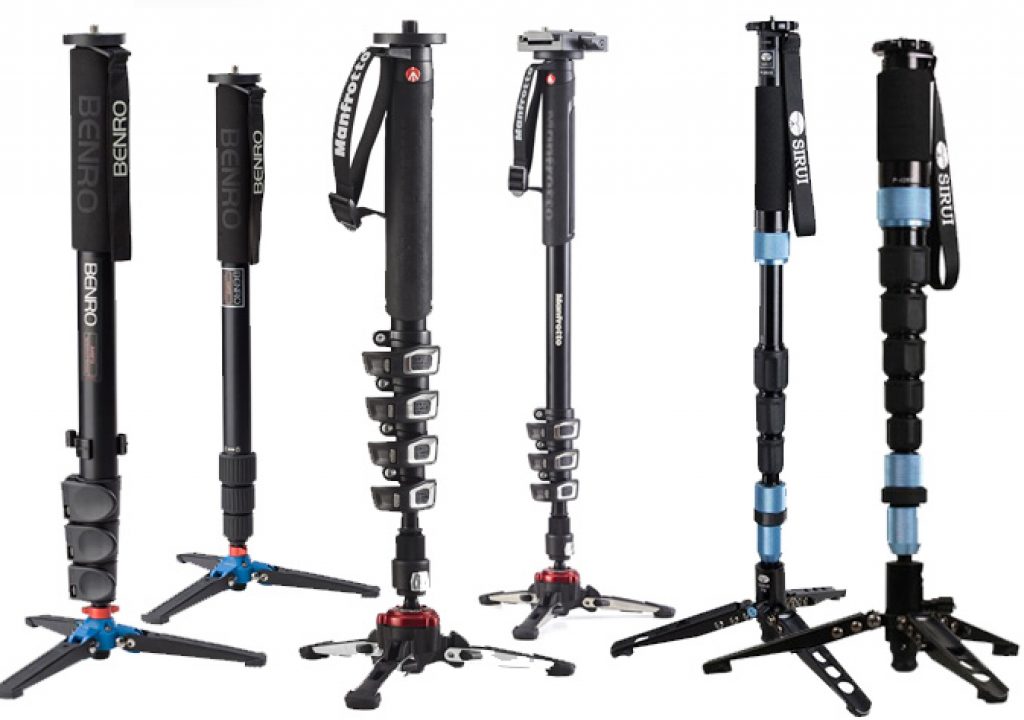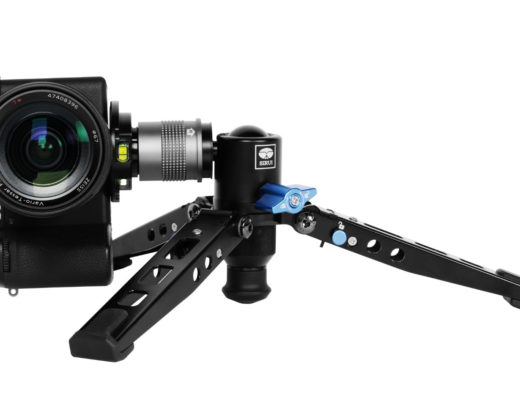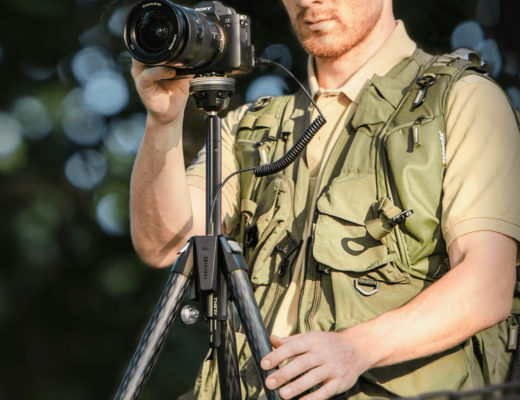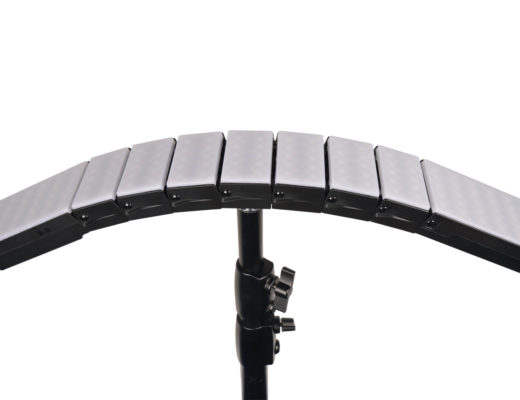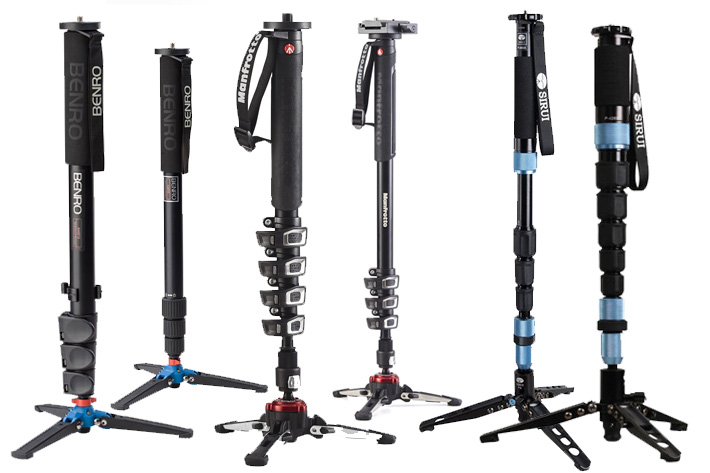
Which video monopod is better? It depends, really. That’s why we prefer to present readers a selection of monopods that all have one thing in common: they have feet, to help stabilize the camera for video. They’re video monopods.
Whether you shoot live events, weddings or documentary, a monopod is a practical solution. A monopod allows you to work faster than with a tripod, but still free you from having to hold the weight of your camera and lens for a long time. The advantage is that you’ve a monopod which is small, lightweight and has a small footprint, allowing you to move as quickly as a photographer, but giving you extra support and more camera movements when you stop for capturing video.
Although you’ll find multiple brands offering video monopods, we settle here for three names that are quite popular among users: Benro, Manfrotto and Sirui. Between them you’ll find the right solution for you, depending on the weight you are ready to carry and the load you need the tripod to support. These monopods are adequate solutions for videographers working alone and needing a portable, stable support for video.
A monopod should be compact, stable and versatile. A monopod is a logical addition to your travel and outdoor kit, as it takes little space but gives you the needed support for results that are superior to handheld shooting, either still or animated images. A video monopod takes versatility a bit further, and allows to work with better support whether you’re alone in nature or in crowded places where there is limited freedom of movement.
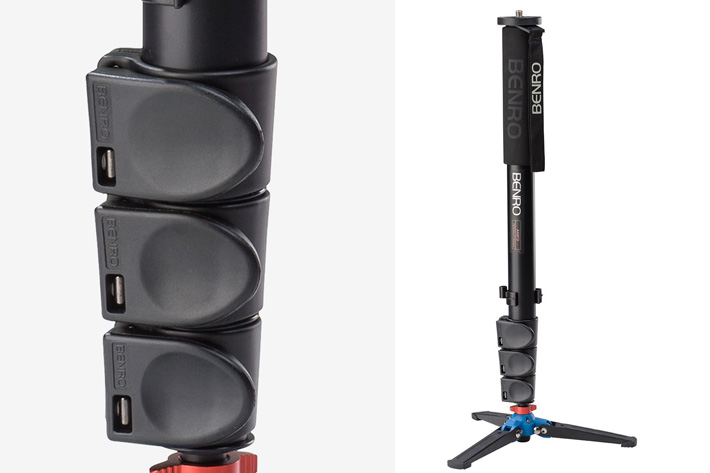
The Benro family offers a total of three models – A38FD, A38TD and A48FD – which extend to multiple variations as you select a different video head to use with the tripod. The A38FD Aluminum Monopod, the smallest size, can take a maximum load of 39.68 lb (18 kg), has a minimum height of 21.26 in (54 cm) with a maximum height of 61 in (154.94 cm). Folded it has a length of 21.3 in (54 cm) and a weight of 2.07 lb (0.94 kg). The legs use a flip lock, a quick lock lever which is the type of system preferred by some. The TD model is similar but uses twist lock leg grips, which, again, is a system that other users prefer. There is a good reason for brands to offer the two systems: satisfy the market. We do not all have the same preferences.
The A48FD monopod can take a maximum load of 44.09 lb (20 kg), has a minimum height of 22.05 in (56 cm) with a maximum height of 64.6 in (164.08 cm). Folded it has a length of 22 in (56 cm) and a weight of 2.36 lb (1.07 kg). The legs use a flip lock, a quick lock lever which is the type of system prefered by some. Benro also has a model with twist lock leg grips, but apparently, according to the information available on the website, it is only available when you buy a monopod with head included.
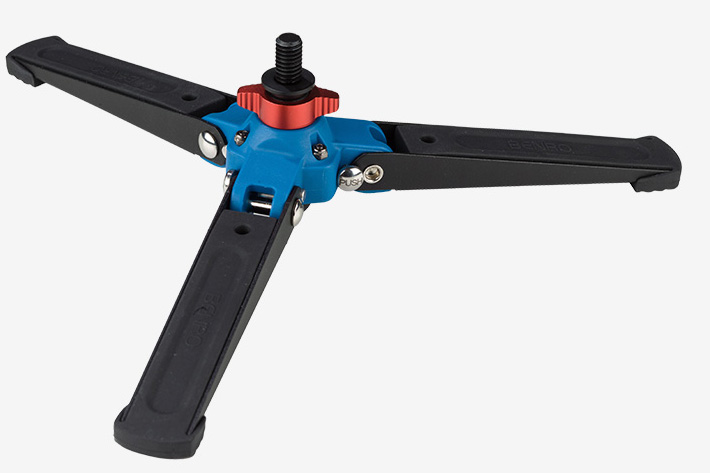
What makes this type of video monopod unique is, in fact, the 3 leg folding base that attaches to it. The three legs reverse for transporting the monopod, but when extended give the user an extra support not available on a common photo monopod, along with the option to move the column freely on the ball joint, for smooth stable shots. In fact, the 3-leg base provides extra stability for shooting video as well as a pan cartridge for extra smooth movements, while still being a good support for your stills.
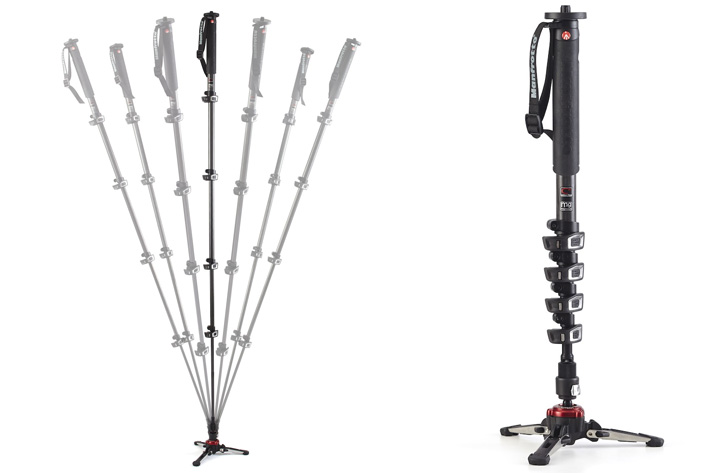
Manfrotto has had a video monopod with feet for a while, centered on a base, the MVA50A, that is adaptable to different monopods of its catalog. At the end of last year, though, they introduced a new option which is not only cheaper ($99 against $109) but also makes more sense if you’ve a monopod of the new series, XPRO. The XPRO Monopod+ Full Fluid Base (MVMXPROBASE) features the ground-breaking Fluidtech system, making Manfrotto XPRO Monopod+ “the first of its kind in the market to feature 3D fluidity for the ultimate smoothness in an extremely compact solution for advanced video shooting” according to Manfrotto.
This innovative solution features 3D fluid movement – on pan, tilt and swivel, with pioneering technology based on a spherical system located inside the base, adds the information provided by the company. The monopod also offers a quick way to set the vertical lock, which is a great alternative. When the priority is panning, 3D rotation can be locked in the vertical position, leaving pan movement free and giving additional shooting control. This means, also, that the monopod can be used both for photography and video, offering the functions of a regular photo monopod when you need it. Again, although the system has a base with three feet, Manfrotto warns users that the vertical lock does not guarantee full self-standing support when the camera is mounted).
One interesting aspect of the new base is that it can be bought independently, what makes sense as it is compatible with all XPRO Photo Monopods+, with the exception of the MMXPROA3B. This means that if you already own a monopod from the XPRO series you can use it together with the base. In fact, they easily combine by unscrewing the foot at the bottom of the monopod, converting the photo monopod into a video monopod for smooth video footage.
The Fluidtech base is also an interesting piece of kit that offers users an extra support for their cameras. The top attachment features a 1/4″ screw which can be used to support a camera directly, giving you the best of two worlds: a video monopod for regular use and a small tripod (that’s what it looks like with the three feet) allowing you to use at very low level.
The system is, in fact, completely modular, as you can buy the base, the monopod you prefer and the type of head most adequate for the kind of work you do. Manfrotto does have a series of XPRO Video Monopod+ kits (which all include the Fluidtech base), but anyone wanting to adapt a XPRO Monopod+ Photo to video can, simply by buying the base, and a different type of head, if needed.
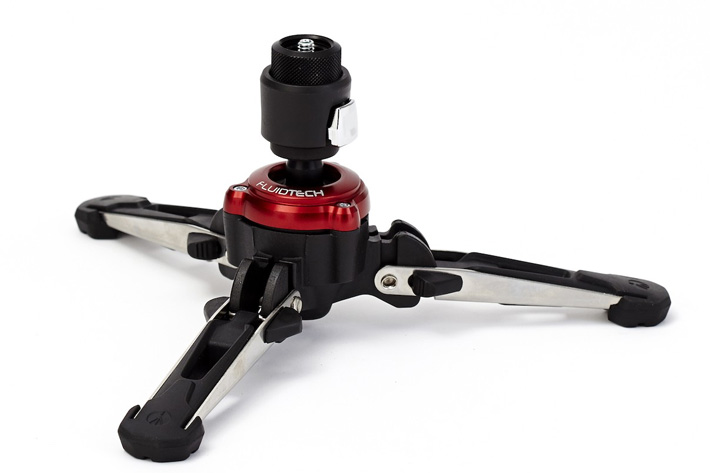
The XPRO Monopods family offers multiple solutions, both in aluminum and carbon fiber, with different maximum and minimum heights and three, four or five leg sections. As everything can be changed around a common base, it makes no sense to suggest a specific solution. Users should “build” their own system selecting from the different monopods and head available, following the logic Manfrotto created for its system. As a reference, the lowest priced monopod costs $79.99 (a three section aluminum monopod) while for the five section carbon fiber on top of the list you pay $239.99. These prices are for the monopod only. Then you’ve to add the base ($99) and the head chosen.
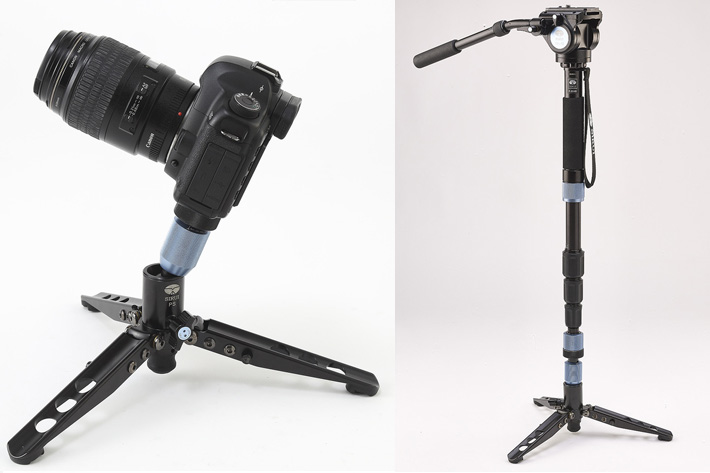
The third name on this list is Sirui. The company offers two ranges of video monopods with feet: the Sirui EP-S Series, with two models, and the Sirui P-S Series Photo/Video Monopods, offering a total of six solutions. The decision to buy one over another one is, again depending on preferences: aluminum or carbon fiber, twist lock or flip lock levers. Then you’ve the head, which can also be chosen according to the preferences and needs of each user. On Sirui making choices is somehow made easy because the EP-S series offers the same model in aluminum or carbon fiber, both models with a flip lock system. The P-S series uses a twist lock system on the legs and is made of carbon fiber for all models except for the smaller model, the Sirui P-204S Aluminum Photo/Video Monopod.
The Sirui P-204S Aluminum Photo/Video Monopod, can take a maximum load of 17.6 lb (8 kg), has a minimum height of 27.2 in (69 cm) with a maximum height of 63 in (160 cm) and a weight of 2.9 lb (1.3 kg). Specifications are not very different from the EP-204S model, which can take a maximum load of 17.6 lb (8 kg), has a minimum height of 24 in (61 cm) with a maximum height of 63 in (160 cm) and a weight of 2.4 lb (1.1 kg) for the aluminum version.
Just as a reference, the larger model at Sirui, the P-424S, a carbon fiber monopod, can take a maximum load of 26.5 lb (12 kg), has a minimum height of 30.1 in (76,5 cm) with a maximum height of 74.8 in (190 cm) and a weight of 3.1 lb (14 kg).
The feet, are, again, what makes the Sirui monopods so distinctive. According to the company, the Sirui designed and patented 360° panning hand grip produces smooth, pro-level panning effects. It’s foam padded for a comfortable feel and secure hold in cold or wet conditions. If you don’t need the panning function, simply tighten the locking collar.
Using the system is simple. To tilt the monopod 20° in any direction, Sirui utilizes a precision ball head mechanism in the base of the monopod. Control the amount of drag that you need by turning the tension control knob. To restrict movement (no tilting) twist the vertical locking collar and turn it into a monopod with support feet. Although it is possible to balance a camera on top of the monopod, Sirui warns users to not use the monopod as a free-standing support.
For travelling or just move rapidly from one place to another, the support feet can fold flush and lock into position against the monopod leg. The large rubber foot lets you work on slippery surfaces and can be replaced with a stainless steel spike for use outdoors.
Sirui indicates that In response to demands for compact travel versions, the new Sirui P-326S and P-426S have been introduced. They fold extremely small (54~57cm (21~22.4 in.) and can easily fit into carry-on luggage or, when disassembled, most backpacks. These 6-section monopods have 10 layers of 100% Carbon Fiber for added strength.
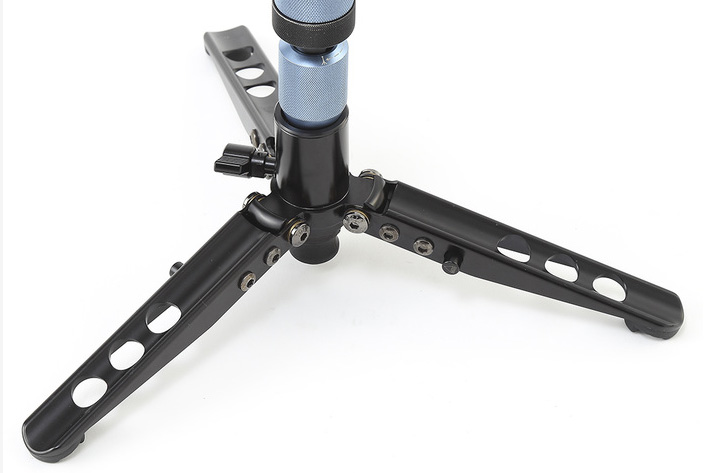
If you don’t need the feet, you can easily unscrew them and convert the Sirui PS Photo/video Monopod into a conventional monopod. And for added flexibility, the feet can be used as a table-top or low angle tripod!
As a final note let’s mention, again, that this guide for video monopods available on the market in 2017 does not cover all brands. It is published as a suggestion and a starting point for readers to do their own research, based on the brands that are mentioned more times when a conversation about video monopods takes place. It is not and does not pretend to be a “best of”, because there is one reason why there are so many choices in the market: people have different needs and preferences. I hope this guide helps you to choose the video monopod that best suits your needs.

Filmtools
Filmmakers go-to destination for pre-production, production & post production equipment!
Shop Now